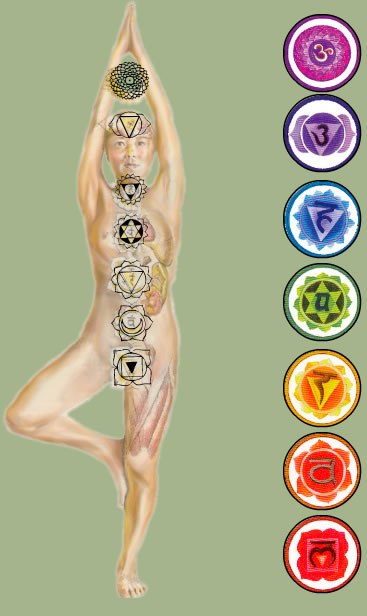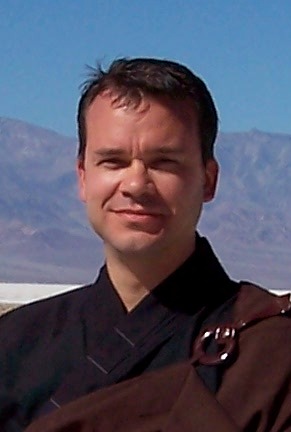Home » Literature Archives »The Truth About Rainbows
THE TRUTH ABOUT RAINBOWS
by Fa Tian Shakya
- Mark Twain
The sky overhead was cloudy as I left for work, but I could see that it was beginning to clear in the west. It had rained all night, making the drive a wet one. I was heading south, but in one of the winding curves, I faced west - and it was then that I saw it - a perfect rainbow. With a backdrop of black clouds, it arced across the sky and seemed to strike the horizon near my office. "Maybe I'll get to see where it ends," I thought, and laughed, since I'm not usually that whimsical in the morning. The road, still difficult, no longer commanded my attention: even when it straightened out and I headed south, every few miles I'd glance westward at the rainbow.
I don't know why rainbows should have such power over us, or why they should be so fascinating. Yet, when one is in the sky, it is impossible to look at anything else. We know, no matter how we might wish otherwise, there is neither an idyllic Oz waiting "somewhere over the rainbow," nor a pot of gold that will solve all our financial problems hiding where colors meet earth.

Maybe my analytical mind resented all this attention to spectral beauty. What was the big deal? There is nothing mystical about rainbows at all; the angle of the sun and the atmospheric conditions were ripe for their formation. It is a simple issue of optics, as was explained by Rene Descartes in 1637. White light, like that from the sun, is made up of individual wavelengths, or frequencies, of light. As the sun’s light enters a rain drop, and moves through varying densities within it, the light bends, or refracts. Since each wavelength of light travels at a different speed, this refraction causes the light to disperse, or separate, into a contiguous broad spectrum. Our eyes can only discern a narrow range of wavelengths which we term the ‘visible spectrum’ – from 400 to 700 nanometers. With the aid of our eyes and brain, we discriminate those wavelengths into the seven classic colors, the order of which we're taught to remember by the mnemonic ROY G. BIV - red, orange, yellow, green, blue, indigo, and violet.
Understanding optical phenomena takes some of the magic out of rainbows, but it can't completely destroy their mystique, and it can't take away their beauty. The child inside us doesn't know or care that the wavelength of the color red is 680 nanometers. It believes that Roy G. Biv is the name of the leprechaun that guards that pot of gold at rainbow's end.
The drizzling rain had stopped as I turned into the parking lot. I got out of my car and then, with nothing else to distract me, I stood there in reflection looking at the rainbow. My view was perfect; and I could see it in its entirety arcing from north to south. Within the arc of the rainbow I let myself be an awed and innocent kid again. The moment of pure simplicity ended with the splashing of another shower; and I hurried into the building, but I didn't stop thinking about rainbows.

The ancient Egyptians, I remembered reading someplace, believed that colors had the power to heal, which today is called Chromotherapy. Certain colors were purported to cure certain types of disorders. The color red could stimulate the circulation in the mind and body, yellow purified the blood. Blue was often used to treat all kinds of pain, and indigo was the nostrum of choice for curing skin ailments. Roy G. Biv, it seems, had a thriving medical practice amongst the pharaohs. In India, too, the rainbow's spectrum imprinted itself on the seven chakras. The Root chakra, for instance, is associated with red. As we progress upward through the chakras, we see that each is matched with one of our rainbow’s colors until we reach the Crown chakra which is associated with violet. Evidently, Roy G. Biv was also a talented guru.
The ultimate truth about rainbows was taught by the Buddha. The rainbow isn't real. No, this doesn't mean that the rainbow wasn't there; we've all witnessed the arcing colors that suddenly bless a bleak sky. But the world we apprehend with our senses is not considered real. For something to be considered real by Buddhist standards it must be causeless and have no conditions placed upon its existence. What we see in the sky and call a 'rainbow,' due to the interdependence of all things in the material world, is the result of causes and conditions - rain and sunlight to name but two. And even these two cannot be considered real, as they are dependent on other things as well. Rainbow, rain, and sunlight – all have a transitory, impermanent, nature. They exist for but a moment due to their causes and conditions, and then are gone, never to return in exactly the same way. As the Buddha tells us in the Diamond Sutra, "The Tathagata has explained that the worlds are not worlds, they are merely called 'worlds'." By this he means that no matter how we glorify or condemn a thing in the material world, giving it indelibility, a finite concreteness, and a set of properties to which we affix a name, it is still illusory and, as such, is not part of the seamless reality of nirvana. But due to our ignorance of this seamlessness, our inability to truly understand how everything is interrelated, we fail to comprehend causes and conditions. We discriminate and create in our minds such things as "worlds," and, in my case, rainbows.
In Zen, the subject of enlightenment is very much like this thing we call a rainbow. We can study the technical facts of it. We can read about the conditions that help create the enlightenment experience, the 'expedient means' as the Buddha is often quoted as saying - how sitting in meditation helps to still the mind and open the heart, leaving a space into which charity, morality, forbearance, vigor, mindfulness, and wisdom can flow, giving us the surface we can glide upon to reach that other shore.
But before that spectrum can emanate from the rain's prism, there is first the light, the pure light known to us in Zen as Amitabha, the Buddha of Infinite Light. To experience this light of enlightenment is to be cured of our delusions, particularly those we create when we try to separate things into constituent parts and assign to them any kind of reality. And yet when enlightenment comes, if it comes, it comes in its time – not on the schedule we've laid out for it. Another name of Amitabha is Amitayus, the Buddha of Infinite Time. And so, enlightenment comes like the rainbow, when conditions – conditions which are not in our control - are right; and though thunder, lightning and lashing rain may have heralded its coming, there are still other requirements. We can be there, ready to witness it, to experience it and to see what it illuminates, but we can't force it to happen. Like the elusive end of the rainbow, if we chase after it, trying to get that 'pot of gold,' it moves away from us. The harder we try, the faster it recedes. Wisdom dictates that we be passive and patient and turn our attention away from the material world.
As the Heart Sutra states, "O Shariputra, all dharmas are marked with emptiness. They do not appear nor disappear, are not tainted nor pure, do not increase nor decrease. Therefore in emptiness: no form, no feelings, no perceptions, no formations, no consciousness; no eyes, no ears, no nose, no tongue, no body, no mind; no color, no sound, no smell, no taste, no touch, no object of mind; no realm of eyes...until no realm of mind-consciousness; no ignorance and also no extinction of it, until no old-age and death and also no extinction of it; no suffering, no origination, no stopping, no path, no cognition, also no attainment with nothing to attain."
I had to go out to my car to get some papers. As I stepped out the door I instinctively looked for the rainbow. It had gone, leaving me to recite the Heart's mantra, "Gate Gate Paragate Parasamgate Bodhi Svaha."

